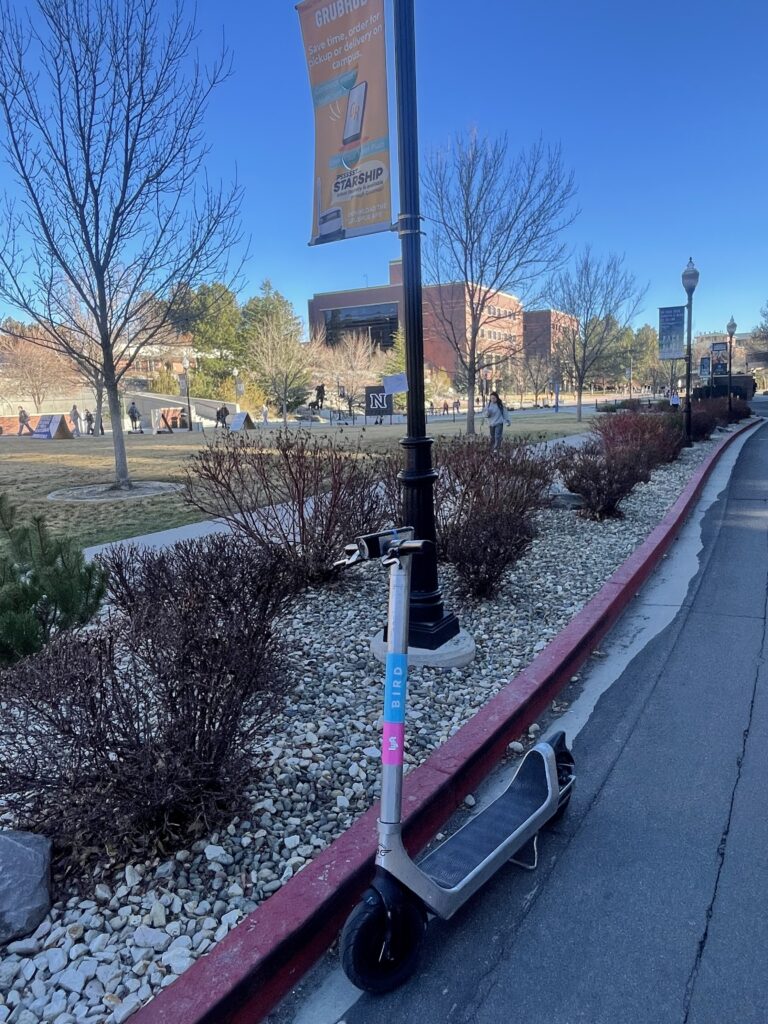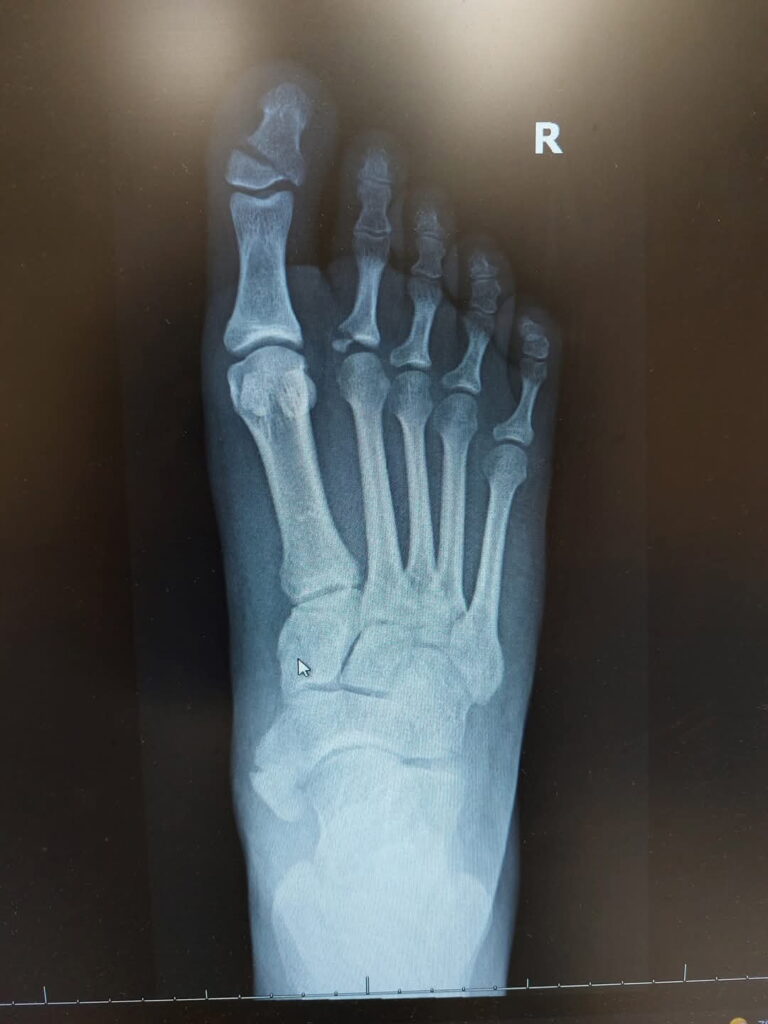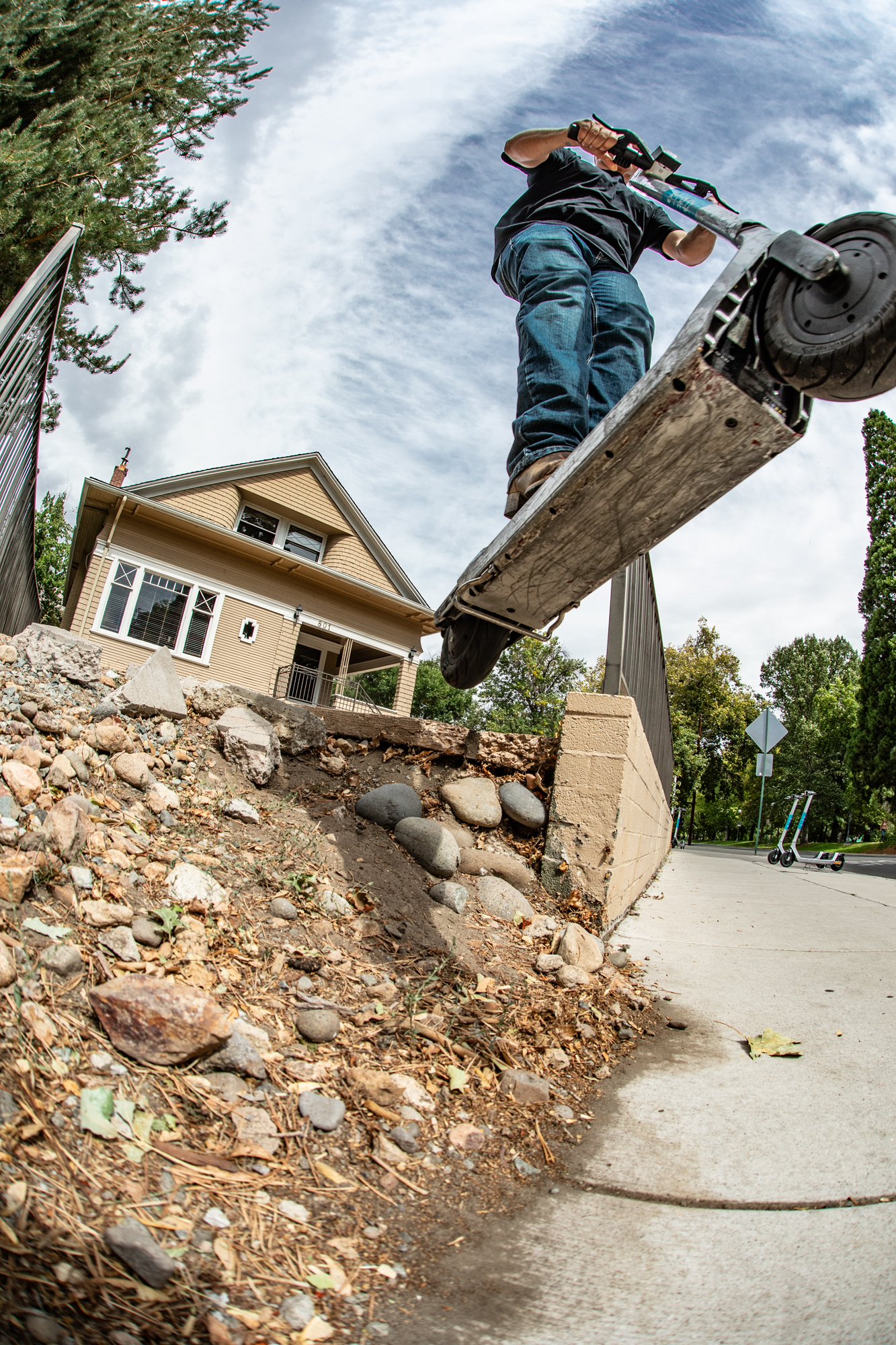By Tim Neeley
Electric scooters, or e-scooters, have become an increasingly common sight in urban centers across America. In Reno, Nevada, these two-wheeled vehicles have transformed how residents navigate the city’s streets—offering a blend of fun, convenience, and environmental consciousness that appeals to commuters, students, and tourists alike.
Since their introduction to Reno’s transportation landscape, e-scooters have sparked debate. While supporters praise their efficiency and eco-friendly nature, others raise concerns about safety and infrastructure adaptation. These vehicles have reshaped Reno’s urban mobility in measurable ways.
Bird, founded in Santa Monica in 2017, has grown from a local electric scooter rental company into a global enterprise partnering with cities and universities worldwide. Though the company touts improvements in safety infrastructure and environmental impact, data reveals mixed outcomes in these areas.
Reno residents have completed nearly half a million trips on Bird scooters, traveling more than 580,000 miles—equivalent to circling Earth 23 times at the equator.
The company aims to reduce traffic congestion through its fleet management and safety programs. Their standard model scooters, weighing 38.5 pounds and capable of reaching 15 mph, have become ubiquitous in downtown Reno, marked by their distinctive black-and-white design and baby-blue branding.
According to the Reno Police Department, there have been 248 reported incidents in Reno since 2022, with 35 involving alcohol or drugs. While a 2023 Denver Health Medical Center trauma unit study revealed that 73% of e-scooter injury patients were intoxicated at the time of their accidents, Reno’s data suggests a lower rate of alcohol-related incidents at approximately 14%. Reno’s incidents have ranged from minor falls to serious collisions, and some scooters have been stolen or used in criminal activities.
Chris Johnson, public information officer for the Reno Police Department, says many incidents go unreported. “I’ve been driving downtown in my patrol car and seeing people fall frequently. They just get back up and keep going.”
Based on city records, more than 500 formal complaints have been filed regarding e-scooters between January 2022 and May 2025. The complaints predominantly focus on accessibility concerns and safety hazards, with many citing improperly parked scooters blocking sidewalks and handicap ramp access. City maintenance records further reveal numerous service requests for damaged scooters requiring removal from public spaces. During my investigation, I walked downtown to observe the situation firsthand and witnessed several improperly parked scooters—including one that had been discarded in the Truckee River.


Safety concerns have led to legal challenges across the country. In May 2020, a mass action lawsuit filed in Los Angeles Superior Court alleged poorly maintained scooters throughout Santa Monica. Similar issues have emerged in Reno, as evidenced by a notable case in June 2023.
Reno resident Kelly Matthews claimed her scooter malfunctioned when its brakes failed. Though Bird scooters are designed to max out at 15 mph, Matthews reported traveling at about 25 mph when she collided with an electrical box. The crash left her with three broken bones in her foot, a severed toe that required reattachment, and neck and shoulder injuries that left her unable to work for months. She remains in a wheelchair.


Analysis of cities between 100,000 and 250,000 residents shows varied results. Portland reports a 16% reduction in scooter accidents for 2024, with city officials stating, “traffic death is preventable through infrastructure, education and enforcement.” Reno’s accident rates are 12% below the national average based on incidents per 10,000 rides.
On the environmental front, Suzanne Groneman of Reno’s Office of Sustainability and Climate Action explains the city’s motivation for supporting e-scooters. “One of our biggest challenges in Reno is ground-level ozone pollution from vehicles,” she says. “That’s why we focused on the downtown-midtown corridor between Interstate 80 and Plumb Lane.” The city has modified infrastructure by adding designated parking zones and improving sidewalk access, though Groneman acknowledges ongoing challenges. “Retrofitting these changes into areas with narrow streets and sidewalks has been particularly difficult, since the original infrastructure wasn’t designed for this type of transportation.”
Bird estimates that one-third of rides replace car trips, reducing emissions. The company has generated $215,000 for Reno and contributed $3,000 to an adaptive fund supporting accessible transportation options.
Jason Mochado, a nurse practitioner treating e-scooter injuries, reports seeing frequent scaphoid fractures, concussions, and road rash. “When you fall with an outstretched arm, the scaphoid bone in your wrist is particularly vulnerable,” he explains. “These injuries can lead to serious complications like bone necrosis if not properly treated.” Mochado emphasizes the importance of protective equipment: “Knee pads, elbow pads, helmets, and proper footwear are essential. Many injuries could be prevented if riders took these basic precautions.” He disputes Matthews’ claim of reaching 25 mph, noting that Bird scooters typically max out at 15 mph – closer to a running speed that allows riders to potentially run out a fall.
While e-scooters gain popularity, safety concerns continue. Bird has implemented safety measures including mandatory late-night sobriety tests in its app and maintains a reported incident rate of 0.01% across over 900,000 rides in Reno. The company uses geo-fencing technology to create slow zones in challenging areas and no-ride zones in unsafe locations.
Bird recently renewed its Reno contract through 2027, extending service in the city and at UNR. The company is exploring RTC partnerships to improve first/last mile connectivity and reduced fares, aiming for more accessible sustainable transportation.
E-scooters show lower fatality rates than other transport modes – the US Department of Transportation reports 18 fatal e-scooter crashes between 2017 and 2022, compared to 42,000 car-related fatalities nationwide.
Despite the risks, many residents see value in the service. “I believe they’re convenient, especially in places like the school, but I do think that they’re very dangerous,” says local resident Katrina Silva, who regularly uses the scooters for short trips downtown, “but riders need to be aware of the safety concerns and take proper precautions.”
The data shows both benefits and challenges as Reno adapts to this new form of urban mobility. While e-scooters reduce emissions and provide convenient transportation, accident reports and maintenance issues persist. Local authorities continue working with Bird and residents to address safety concerns and improve accessibility.
Recent infrastructure improvements and safety measures demonstrate ongoing efforts to integrate e-scooters into Reno’s transportation system. City officials monitor usage patterns and incident reports to guide future policy decisions.



Leave a Reply